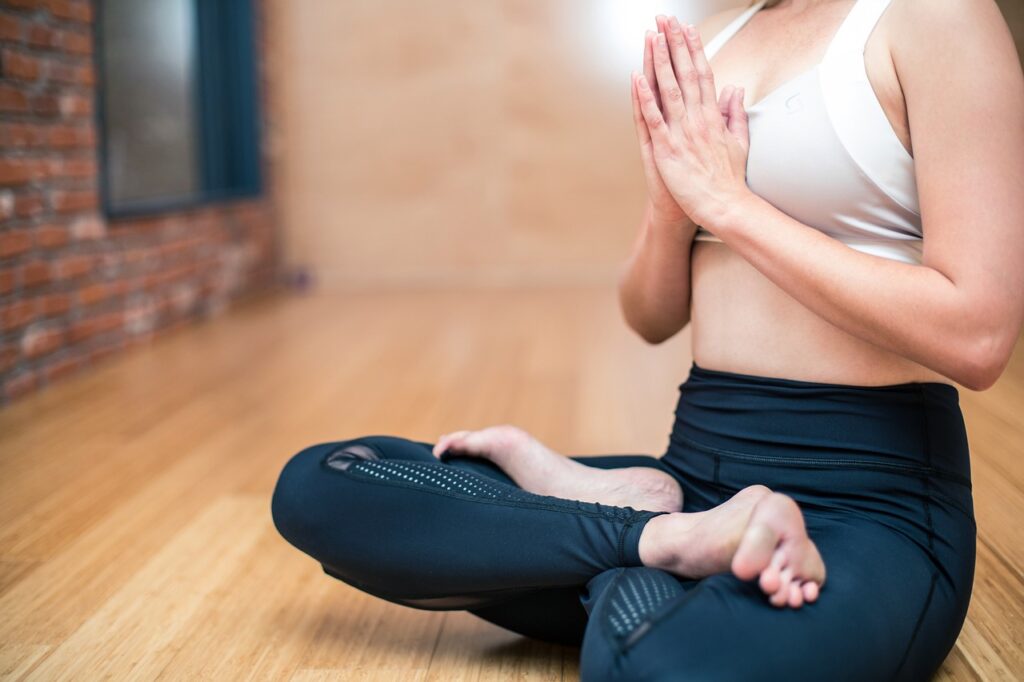So you’ve decided to incorporate walking into your daily routine and reap the many health benefits it offers – excellent choice! But now you may be wondering, is it better to walk for just 30 minutes or go the extra mile and dedicate a full 60 minutes to this activity? In this article, we will explore the advantages and potential trade-offs of both options, helping you make an informed decision about how long you should walk for maximum impact on your overall well-being.
Benefits of Walking
Walking is a fantastic form of exercise that provides numerous benefits for both your physical and mental health, as well as aiding in weight management. Whether you choose to walk for 30 minutes or 60 minutes, you can reap these advantages and incorporate this activity into your daily routine.
1.1 Physical Health Benefits
Walking regularly can have a profound impact on your physical health. It is a low-impact exercise that can be enjoyed by people of all ages and fitness levels. Some of the physical health benefits of walking include improved cardiovascular health, a reduced risk of chronic diseases, and increased muscle strength and bone density.
1.2 Mental Health Benefits
Engaging in regular walking can also have a remarkable impact on your mental well-being. It is a fantastic stress-reliever, helping to reduce anxiety and promote relaxation. Walking can also enhance your mood by releasing endorphins, which are known as “feel-good” hormones. Additionally, walking has been shown to improve cognitive function, including memory and attention span.
1.3 Weight Management
Walking is an effective way to manage and maintain a healthy weight. By engaging in regular walking, you can burn calories and improve your metabolism. Additionally, walking helps to tone your muscles, enhancing your overall physique. Whether you choose to walk for 30 minutes or 60 minutes, you can support your weight management goals through this enjoyable activity.
Walking Duration
When it comes to determining the ideal duration for your walking sessions, it is important to consider recommended exercise guidelines and various factors that may influence your decision.
2.1 Recommended Exercise Guidelines
The American Heart Association recommends at least 150 minutes of moderate-intensity exercise per week for adults. This translates to about 30 minutes of walking on most days of the week. If you can increase your walking sessions to 60 minutes, you can achieve even greater health benefits. However, it is crucial to consult with a healthcare professional to determine what duration is suitable for your individual needs and goals.
2.2 Factors to Consider
While following exercise guidelines is beneficial, it is crucial to consider various factors before determining your walking duration. Your fitness level, age, and personal goals should be taken into account. If you are just starting your fitness journey, it may be more realistic to begin with shorter sessions and gradually increase your duration. Remember, any amount of walking is better than none, so find a duration that works for you and stick with it.
Impact on Physical Health
Walking has a significant impact on your physical health, benefiting various aspects of your well-being.
3.1 Cardiovascular Health
Regular walking helps to improve cardiovascular health by increasing your heart rate and improving circulation. It strengthens your heart muscles, reduces blood pressure, and lowers the risk of heart disease. By incorporating walking into your routine, you can improve your overall cardiovascular fitness and enhance your overall well-being.
3.2 Reduction of Chronic Diseases
Engaging in regular walking can significantly reduce the risk of chronic diseases such as obesity, type 2 diabetes, and certain types of cancer. It helps to control blood sugar levels, improves insulin sensitivity, and reduces inflammation in the body. Walking is also an effective way to manage weight and lower the risk of obesity-related diseases.
3.3 Muscle Strength and Bone Density
While walking may not be as intensive as weightlifting, it still offers substantial benefits when it comes to building muscle strength and maintaining bone density. Walking engages various muscle groups, including the calves, thighs, and glutes, helping to strengthen and tone them. It also helps to improve bone density, reducing the risk of osteoporosis.
Impact on Mental Health
Walking is not just beneficial for your physical health; it has a profound impact on your mental well-being as well.
4.1 Stress Relief
Walking is a wonderful way to reduce stress and enhance relaxation. It provides an opportunity to clear your mind, release tension, and focus on the present moment. The rhythmic motion of walking and being in nature can have a calming effect, reducing anxiety and promoting a sense of peace.
4.2 Mood Enhancement
Walking stimulates the release of endorphins in your brain, which are natural mood enhancers. These endorphins produce feelings of happiness and well-being, making walking an excellent activity for improving your overall mood. Whether you choose to walk for 30 minutes or 60 minutes, you can experience the mood-enhancing benefits of this simple yet effective exercise.
4.3 Cognitive Function
In addition to boosting your mood, walking has been shown to improve cognitive function. Regular walking can enhance memory, attention span, and overall brain function. It increases blood flow to the brain, promotes the growth of new brain cells, and improves overall cognitive performance. By incorporating walking into your routine, you can not only improve your physical health but also enhance your mental acuity.
Weight Management
Walking is a fantastic tool for managing and maintaining a healthy weight.
5.1 Calorie Burn
Walking is a moderate-intensity exercise that can help you burn calories and maintain a calorie deficit for weight loss or management. The number of calories burned during a walking session depends on various factors such as speed, duration, and body weight. On average, a person weighing 150 pounds can burn approximately 150-300 calories in 30 minutes of brisk walking.
5.2 Muscle Tone
Although walking may not provide the same muscle-building effects as weightlifting, it can still help you tone and firm your muscles. Regular walking engages various muscle groups, including the legs, glutes, and core. As you continue to walk, you will notice increased muscle tone and improved overall body composition.
5.3 Metabolism
Engaging in regular walking can also boost your metabolism, which is essential for healthy weight management. Walking increases your metabolic rate, allowing your body to burn calories more efficiently throughout the day. This can help you maintain a healthy weight or even lose weight if combined with a balanced diet.
Time Commitment
Incorporating exercise into a busy schedule can be challenging, but walking offers flexibility and convenience.
6.1 Fitting Exercise into a Busy Schedule
The beauty of walking is that it can be easily integrated into your daily routine. You can choose to walk during your lunch break, commute to work on foot, or take a stroll after dinner. By breaking down your walking sessions into smaller increments, you can make it more manageable and eliminate the excuse of not having enough time for exercise.
6.2 Long-Term Commitment
Consistency is key when it comes to reaping the benefits of walking. It is important to make a long-term commitment to regular walking to achieve and maintain good health. By incorporating walking into your daily routine and making it a habit, you can ensure that you are getting the most out of this enjoyable form of exercise.
Safety Considerations
While walking is generally a safe exercise, there are certain considerations to keep in mind.
7.1 Joint Impact
Walking is a low-impact exercise that puts minimal stress on your joints, making it suitable for people of all ages and fitness levels. However, if you have any existing joint issues or concerns, it is advisable to speak with a healthcare professional before starting a walking routine. They can provide guidance and recommend modifications to ensure the safety of your joints.
7.2 Overuse Injuries
As with any physical activity, it is important to listen to your body and avoid overexertion. Walking should not cause pain or discomfort. If you experience any persistent pain or injuries, it is essential to seek medical attention and rest as needed. By pacing yourself and gradually increasing your walking duration, you can minimize the risk of overuse injuries.
7.3 Weather Conditions
While walking can be enjoyed in various weather conditions, it is essential to take precautions to ensure your safety and well-being. In extreme heat or cold, it is advisable to adjust your walking routine or find alternative indoor walking options. Additionally, staying hydrated and dressing appropriately for the weather will help you stay comfortable and safe during your walks.
Variety and Challenge
To keep your walking routine engaging and effective, it is important to introduce variety and challenge.
8.1 Walking Speed and Intensity
To get the most out of your walking sessions, you can vary your walking speed and intensity. Incorporating periods of brisk walking or adding intervals of jogging can increase the intensity of your workout and challenge your cardiovascular system. This can help you burn more calories, improve your fitness level, and achieve better results.
8.2 Incorporating Different Terrains
Walking on different terrains can add variety and challenge to your routine. Walking uphill or on uneven surfaces engages different muscle groups and adds resistance to your workout. Consider exploring parks, trails, or hilly neighborhoods to spice up your walking routine and enjoy the benefits of different terrains.
8.3 Interval Training
Interval training involves alternating between periods of high-intensity exercise and lower-intensity recovery. Incorporating interval training into your walking routine can help you increase your fitness level, burn more calories, and challenge yourself. For example, you can alternate between walking at a fast pace for 1-2 minutes and then walking at a moderate pace for 2-3 minutes.
Personal Preferences and Goals
It is essential to consider your personal preferences and goals when it comes to choosing the duration and intensity of your walking sessions.
9.1 Motivation
Maintaining motivation is key to ensuring that you stick with your walking routine. Choose a duration that aligns with your motivation level and keeps you engaged. If you find that walking for 30 minutes is more manageable and enjoyable, then commit to that duration. On the other hand, if you are motivated and have more time available, walking for 60 minutes can provide added benefits.
9.2 Enjoyment
The most effective exercise routine is one that you enjoy and look forward to. If longer walks feel tedious or overwhelming, opt for shorter, more frequent sessions. Walking for 30 minutes every day can be more enjoyable and sustainable than walking for 60 minutes every other day. Experiment with different durations and find what brings you the most joy and satisfaction.
9.3 Fitness Goals
Consider your fitness goals when deciding on the duration of your walking sessions. If your goal is to improve cardiovascular fitness, walking for longer durations can be beneficial. Alternatively, if your goal is primarily weight management or stress relief, shorter but frequent walks can be equally effective. Tailor your walking routine to align with your specific goals and make it work for you.
Conclusion
Regardless of whether you choose to walk for 30 minutes or 60 minutes, walking offers a wealth of benefits for both your physical and mental health. From improving cardiovascular health and reducing chronic diseases to managing weight and enhancing mood, walking is an accessible and enjoyable form of exercise that can be easily incorporated into your daily routine. Consider your personal goals and preferences, and find a walking duration that works for you. Remember, the most important thing is to make walking a habit and enjoy the journey towards better health. So put on your walking shoes, step outside, and start reaping the rewards of this simple yet impactful exercise.






